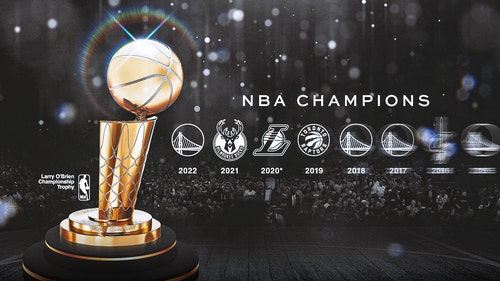
Milwaukee Bucks: How Brandon Jennings Changed the Franchise
In his time with the Milwaukee Bucks, Brandon Jennings fueled incredible levels of optimism that could never quite be maintained, but he did unknowingly set up a legacy that lasts to this day.
Mandatory Credit: Andrew Weber-US PRESSWIRE
What did Brandon Jennings mean to Milwaukee?
Well, he brought swagger, excitement, and a couple of playoff berths to the Bradley Center, but that is not the important question.
The real question that surrounds Brandon Jennings should be: What does Brandon Jennings mean to Milwaukee. The story of Jennings is an important one, not only to the past of the Milwaukee Bucks, but to the present and the future as well.
How? Let’s find out.
Recruitment and Italy
In high school, Brandon Jennings was one of the top point guards in the country. He received offers from some of the best schools in college basketball, including Arizona, Connecticut, Kansas, Kentucky, and USC.
Despite all the offers and the talent he posed on the court, his recruiting process was bit of a mess. First, in August of 2006, he committed to USC. Just a few months later, however, he pulled his commitment to the Trojans and signed with the Arizona Wildcats, where Jerryd Bayless was set to be his backcourt mate. Then Jennings did something that had never been done before. He backed out of Arizona and went overseas.
The NBA rules stated that Jennings had to be at least 19-years-old and one year out of high school in order to be eligible for the NBA Draft. The rule did not forbid Jennings from playing overseas and signing a one-year contract prior to entering the 2009 NBA Draft, so he did just that, playing for Lottomatica Roma.
He was reasonably successful there despite poor shooting percentages, but he carried the momentum of being the country’s top high school recruit the year before into the draft.
Mandatory Credit: Chris Humphreys-USA TODAY Sports
Time in Milwaukee
“With the tenth pick in the 2009 NBA Draft, the Milwaukee Bucks select…Brandon Jennings of Compton, California and Lottomatica Roma.” – David Stern, then NBA Commissioner.
At the time Jennings was drafted, the Bucks ran with a backcourt composed of Luke Ridnour, Ramon Sessions, Charlie Bell, and an oft-injured Michael Redd. They were in dire need of a point guard.
The 2009 draft class offered an abundance of guards, including future All-Stars Stephen Curry, Jrue Holiday, and Jeff Teague. Three point guards had already been selected by #10 (Ricky Rubio, Curry, Jonny Flynn), leaving Jennings to Milwaukee. And with that, the Jennings’ era began.
Jennings made an immediate impact to the Bucks’ roster, nearly dropping a triple-double in his debut (17pts/9reb/9ast). Following that jarring entrance, he continued to show his talent, though somewhat inconsistently. Then, on November 14, 2009, he left Bucks’ fans with a performance they wouldn’t soon forget. He had the “double-nickel” game.
Shooting 21-34 from the floor, including 7-8 from deep, Jennings dazzled fans with 55 points en route to a 129-125 home victory over fellow rookie Stephen Curry (maybe you’ve heard of him). That game marked the Bucks’ fourth win in a row, and Jennings was the talk of the town.
People expected him to be talented, but not that talented. From there, Jennings went on to have a solid rookie season where he finished third in Rookie of the Year voting and led the Bucks to the playoffs.
After that, Jennings improved slightly every season. His shooting percentages fluctuated, but for the most part he became a better scorer as well as developing his passing game. After missing the playoffs in years two and three, he was able to navigate the team back to playoffs in 2012-2013 with running mate Monta Ellis.
Overall, Jennings enjoyed a pretty successful run in Milwaukee, but that is not where his story with the Bucks ends. It’s what happens next that determines the future.
Mandatory Credit: Tim Fuller-USA TODAY Sports
The Trades, Part 1
On July 30, 2013, the Detroit Pistons and the Milwaukee Bucks struck a deal for a sign-and-trade of Brandon Jennings. Out of the deal, the Pistons received Jennings on his new contract of three years, $24 million. In return, the Bucks obtained Brandon Knight, Khris Middleton, and Slava Kravtsov (who only ever played for the Bucks in Summer League).
With the Pistons, Jennings continued to have a solid career, until he ruptured his left Achilles tendon. As for the Bucks, they are clearly the winners of this trade.
In Brandon Knight’s first two years in the NBA, he had been putting up fairly similar numbers to Jennings prior to the trade. Once he was dealt to Milwaukee, he just continued to get better though.
In his first season with the Bucks, he upped his points production from 13.3 per game to 17.9. Along with his increase in points, he got his assists numbers up to nearly five per game. In his second season with the Bucks, he even got his three-point percentage up to a very respectable 40.9 percent.
As for the rest of the trade, the diamond here was definitely Khris Middleton. After being a second round selection in 2012, Middleton had a pretty weak rookie season, despite playing 17.6 minutes per game. Once traded to the Bucks, however, Middleton’s career started to take off.
From year 1 to year 2, Khris saw a jump in his three-point percentage from 31.1 percent to 41.4 percent. He also doubled his points production, and started the majority of the season. Following that breakout, Middleton has continued to excel and take giant leaps every season.
Despite injuring his hamstring last week and derailing his 2016-2017 campaign, Khris Middleton is clearly a vital part of the Bucks’ core for the future.
The Trades, Part 2
On February 19, 2015, the Bucks engaged in a three-team trade with the Phoenix Suns and the Philadelphia 76ers. Out of the deal, the Bucks traded Brandon Knight (who they received in the trade of Brandon Jennings) and in return, they received Michael Carter-Williams, Tyler Ennis, and Miles Plumlee.
Although Knight has continued to develop into a strong guard in the NBA, again the Bucks got tremendous value out of this deal.
Knight went to the Suns in the deal, where he has reached just about 20 points per game. Now in a crowded backcourt with Eric Bledsoe and Devin Booker, he might see a decrease in production this coming year, but there is still a ton of talent in him. Even if Brandon Knight was the closest the Bucks have gotten to an All-Star in some time, it was well worth what they got in return.
Coming off of his Rookie of the Year season, Michael Carter-Williams had some pretty high expectations. Maybe too high. He put up great rookie numbers on a really bad team in Philadelphia and turned the ball over too much. Still, however, he has plenty of talent to be a viable starter or an extremely productive floor general for the bench unit.
Since joining the Bucks, he has seen a slight dip in production, but that has gone hand-in-hand with a slight decrease in minutes and usage rate. He will be coming off the bench this season in Milwaukee and with the newly acquired shooting, he should slide into a comfortable role.
Miles Plumlee, on the other hand, will be the Bucks’ starting center for this season. Maybe a lot of people didn’t expect him to start when the Suns sent him to Milwaukee, but he is. The 6’11” center has shown tremendous chemistry with the young duo of Jabari Parker and Giannis Antetokounmpo, especially in the pick-and-roll.
He has also played a big role in rim protection for the Bucks, who are in desperate need of an improved defense moving forward. With his fine play, Plumlee was rewarded this past summer with a four-year, $52 million contract.
A former first round pick, Tyler Ennis is yet to do too much in the league. He played a few minutes, but never jumped off the page with his talent or his potential. He was fine in his time with Milwaukee, but that just leads us the last part of the domino effect started by Brandon Jennings.
The Trades, Part 3
On September 23, the Bucks traded Tyler Ennis, who was acquired in the Brandon Knight trade, for Michael Beasley. Maybe it’s not the flashiest deal of this offseason, but the Bucks acquired another scorer off the bench.
With four potential primary ball handlers (Giannis, MCW, Matthew Dellavedova, Malcolm Brogdon) on the roster, there was no need for Ennis. Off the bench, however, surrounding MCW with as many scoring options as possible had to have been the goal.
Beasley, a former second overall pick, has had a very inconsistent career, but since coming back from China last season, he showed that he can still flat-out score. Although a high usage player, Beasley averaged 25.3 points per 36 minutes to go along with 9.7 rebounds.
These are astounding per-36 numbers and given his ability to score in bunches, he should be a great addition to the rotation. Sure, the sample size is small, but it is still great value for Tyler Ennis.
Mandatory Credit: Jeff Hanisch-USA TODAY Sports
What Else?
So what did the Bucks get out of Brandon Jennings? Well, they saw two playoff appearances, a 55 point game, a dash of swagger, and a whole lot of future. Due to the trade of Brandon Jennings, the Bucks were able to start a domino effect of two more trades, leading eventually to four key rotation players being added to the roster, two of them starters. How good does this sound:
Bucks trade Brandon Jennings for Khris Middleton, Miles Plumlee, Michael Carter-Williams, and Michael Beasley.
Even with the injury to Khris Middleton this season, the value that the Bucks got out of the domino effect trades was and still is tremendous. That’s not all either.
After drafting the Greek Freak and trading Brandon Jennings in the summer of 2013, the Bucks were a youthful team without any star power, and with that, the Bucks entered the 2014 NBA Draft after a 15-67 season. Everyone knows what happened next.
Milwaukee selected Duke superstar Jabari Parker with the second pick in the draft, completing their core of Parker, Giannis, and Middleton. The future was set, and that future just keeps getting closer and closer.
When it eventually arrives, don’t forget to pause and take a moment to note how Brandon Jennings really triggered it all in the first place.
More from Behind the Buck Pass
This article originally appeared on












